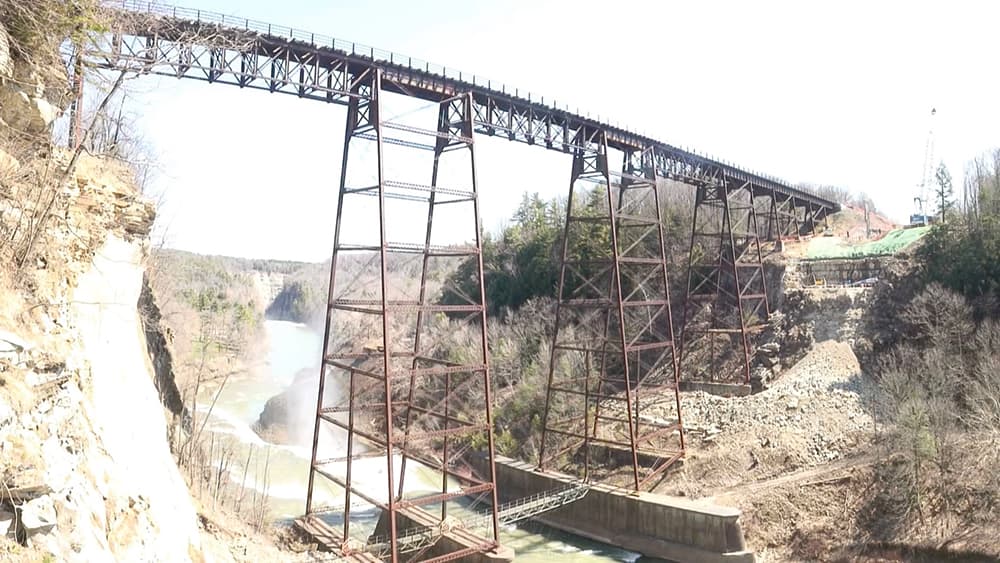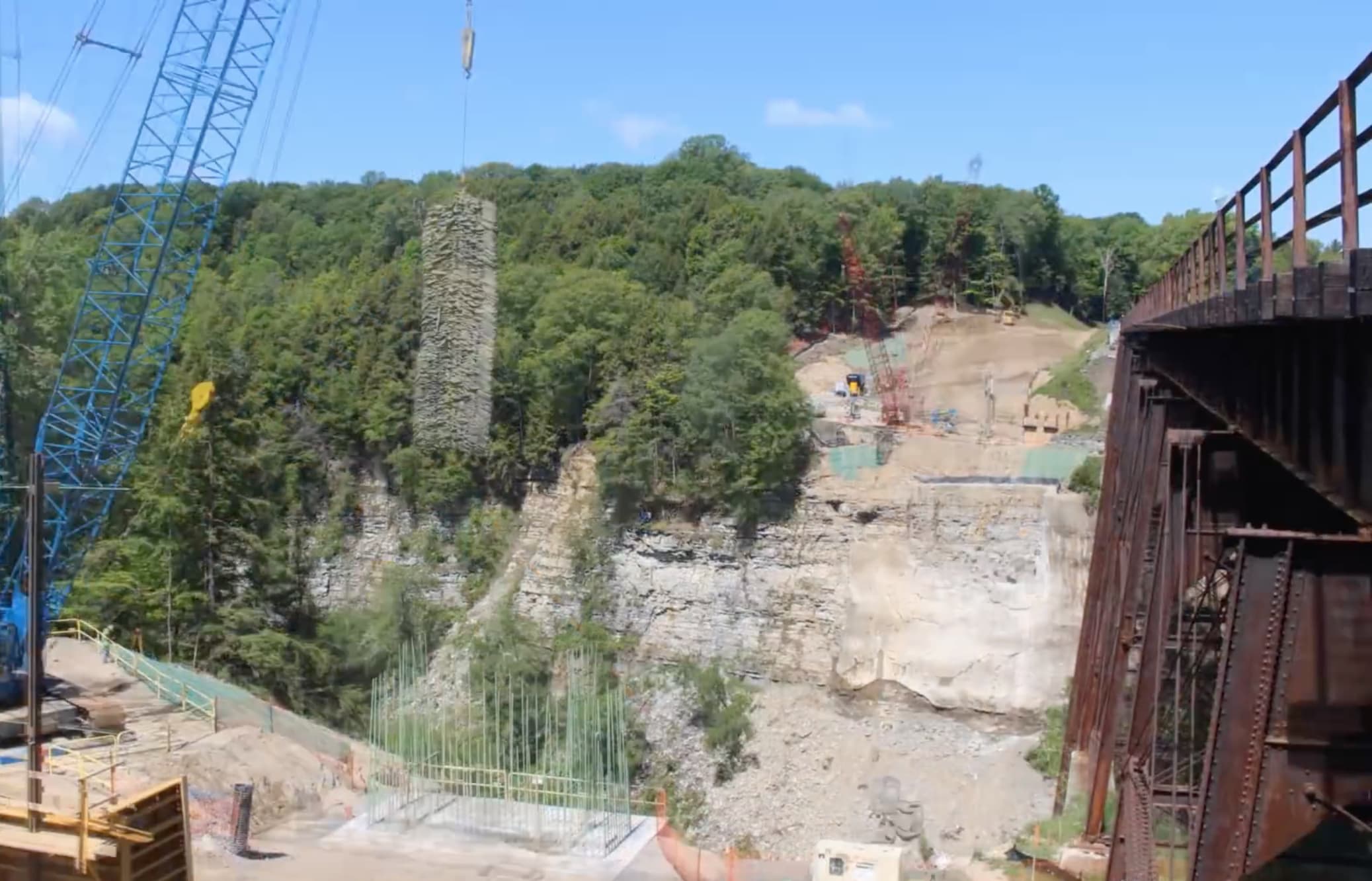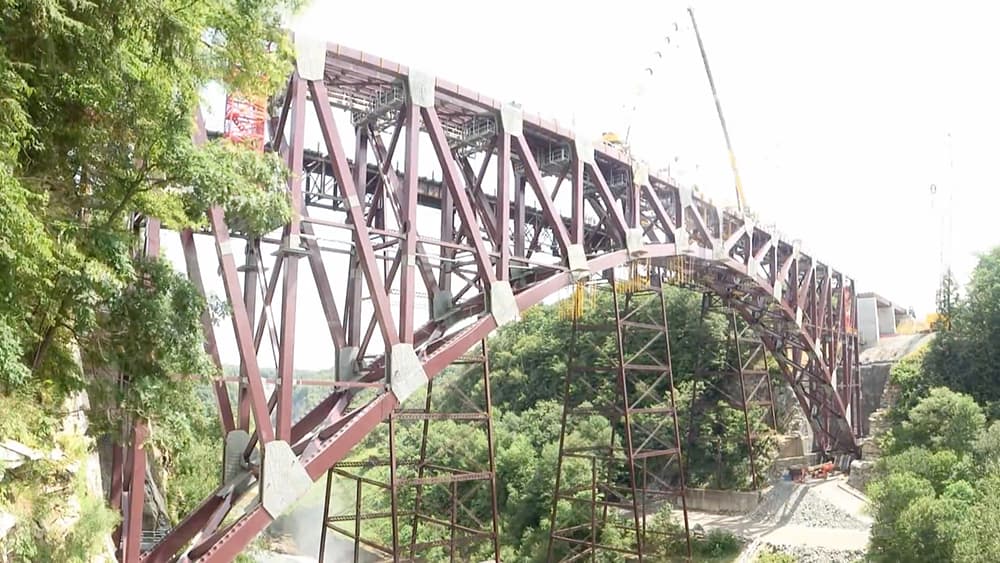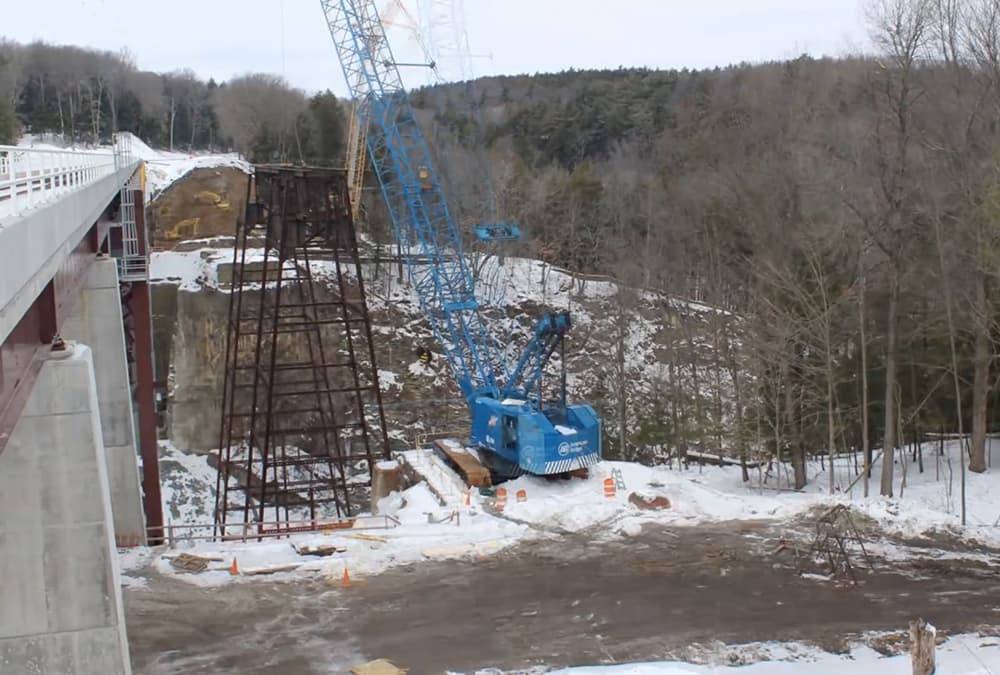Replacing New York's Historic Portageville Rail Bridge
- Youtube Views 9,885 VIDEO VIEWS
UPSTATE New York's Genesee Arch Bridge - also known as Portageville Bridge - is a crucial crossing on the US freight rail network.
Originally constructed in 1852 as a timber truss structure, the 293 metre (963 foot) long and 73 metre (240 foot) tall bridge was the largest wooden crossing in the world. However, it burned down in 1875 and was replaced by an iron structure a year later.

Above: The old Portageville Bridge was built in 1876 (image courtesy of EarthCam).
By the late 2000s, the crossing was no longer fit for purpose. Its advanced age meant it could only carry up 124 tonnes (273,000 pounds) instead of the industry standard of 130 tonnes (286,000 pounds), while trains had to slow down to 16 kilometres (10 miles) per hour to cross it.

Above: The new bridge was built just south of the original crossing (image courtesy of EarthCam).
The replacement bridge was built approximately 23 metres (75 feet) south of the original bridge at a cost of USD $75 million. An arch bridge design was chosen - the first time this type of bridge was built for a rail crossing since the 1940s.
As the arch spans the gorge in one go, no piers in the river needed to be constructed, saving time and money.

Above: The arch design meant that bridge piers in the river could be eliminated (image courtesy of EarthCam).
Construction started in October 2015, and works on the main arch began in March 2017. The first train crossed the bridge in December 2017. The works were captured in this impressive time-lapse video by EarthCam.
The old crossing was demolished over the course of 2018.

Above: The old bridge was dismantled once the replacement crossing entered into operation (image courtesy of EarthCam).
Freight trains can now travel across the bridge at 48 kilometres (30 miles) per hour, ensuring goods can once again flow smoothly into and out of the US northeast region.








